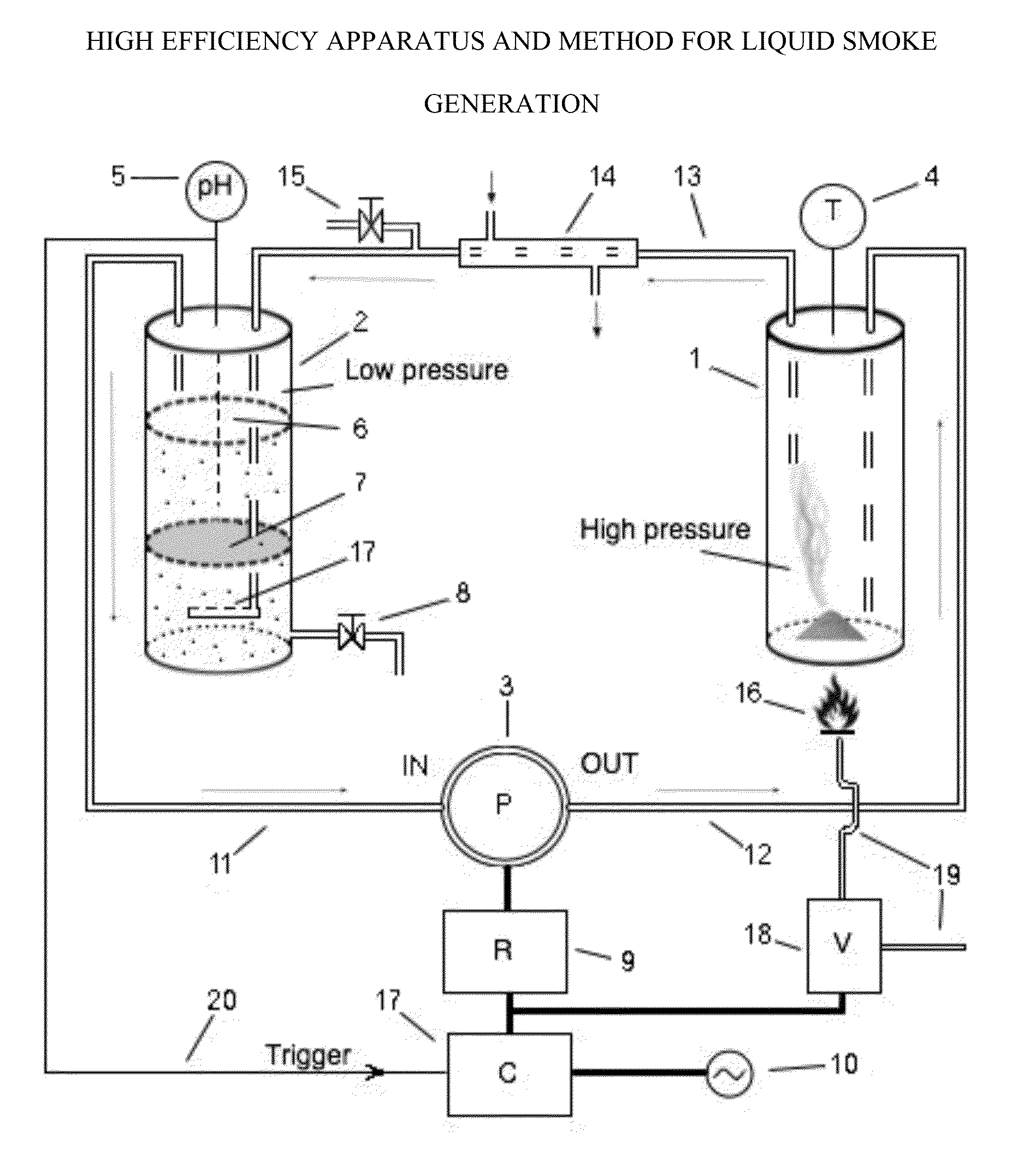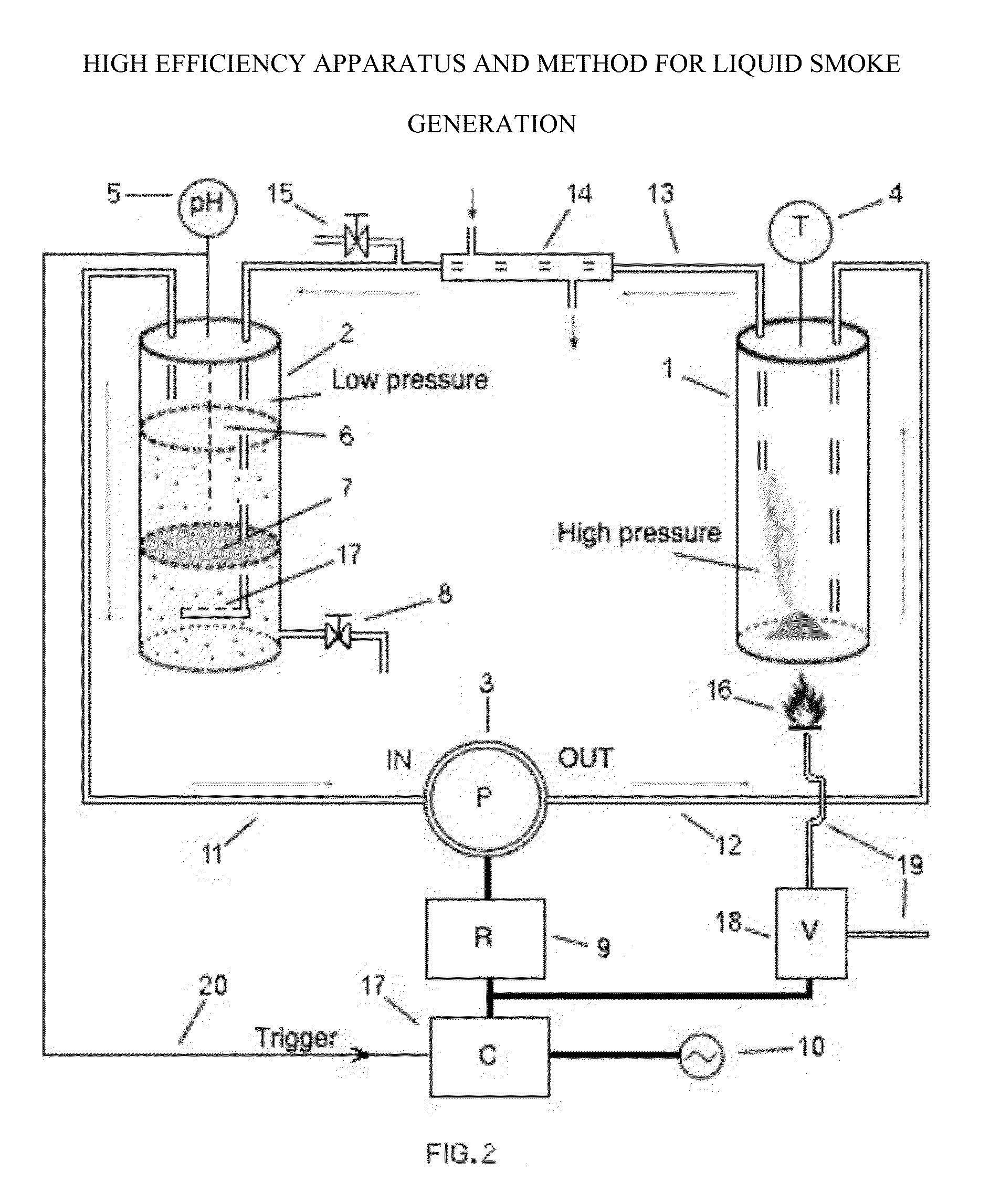High efficiency apparatus for liquid smoke generation from wood
a high-efficiency, apparatus technology, applied in food preservation, packaging under special atmospheric conditions, food preparation, etc., can solve the problems of low efficiency of capturing and applying smoke using such a method, low yield of liquid smoke, and significant air pollution, so as to achieve no air pollution and increase the smoke concentration in liquid smoke
- Summary
- Abstract
- Description
- Claims
- Application Information
AI Technical Summary
Benefits of technology
Problems solved by technology
Method used
Image
Examples
example i
[0029]300 grams of apple wood sawdust was placed into the incinerator (1), which was hermetically sealed afterwards. 10 liters of water was poured into the water tank (2), which was also hermetically sealed afterwards.
[0030]The GAST diaphragm pump with a variable speed controller R (9) was used as a smoke conveying device P (3).
[0031]All elements were connected with pipes according to FIG. 1.
[0032]An incineration temperature of 280 C was achieved by external heating using a propane burner.
[0033]The process will continue until the combustible material has burned. The process status can be monitored by opening the control valve (15) to check for smoke flow. The obtained liquid smoke had a pH value 6, with the same organoleptic properties as one commercially available on the market.
[0034]The yield of liquid smoke using this apparatus was 10,000 ml of liquid smoke from 300 g of apple wood sawdust. The wood consumption ratio 0.03 g / ml was much lower than the common one (0.1 g / ml).
example ii
[0035]600 grams apple wood sawdust was placed into the incinerator (1), which was hermetically sealed afterwards. 10 liters of water was poured into the water tank (2), which was also hermetically scaled afterwards.
[0036]The Elmo Rietschle regenerative blower (3) with a variable speed controller R (9) was used as a smoke conveying device.
[0037]All elements were connected with pipes according to FIG. 1.
[0038]An incineration temperature of 280 C was achieved by external heating using a propane burner.
[0039]The process will continue until the combustible material has burned. The process status can be monitored by opening the control valve (15) to check for smoke flow. The obtained liquid smoke had a pH value 4.6, with the same organoleptic properties as one commercially available on the market.
[0040]The yield of liquid smoke using this apparatus was 10,000 ml of liquid smoke from 600 g of apple wood sawdust. The wood consumption ratio 0.06 g / ml was much lower than the common one (0.1 g...
PUM
| Property | Measurement | Unit |
|---|---|---|
| pressure | aaaaa | aaaaa |
| pH | aaaaa | aaaaa |
| liquid smoke yield | aaaaa | aaaaa |
Abstract
Description
Claims
Application Information
 Login to View More
Login to View More - R&D
- Intellectual Property
- Life Sciences
- Materials
- Tech Scout
- Unparalleled Data Quality
- Higher Quality Content
- 60% Fewer Hallucinations
Browse by: Latest US Patents, China's latest patents, Technical Efficacy Thesaurus, Application Domain, Technology Topic, Popular Technical Reports.
© 2025 PatSnap. All rights reserved.Legal|Privacy policy|Modern Slavery Act Transparency Statement|Sitemap|About US| Contact US: help@patsnap.com



